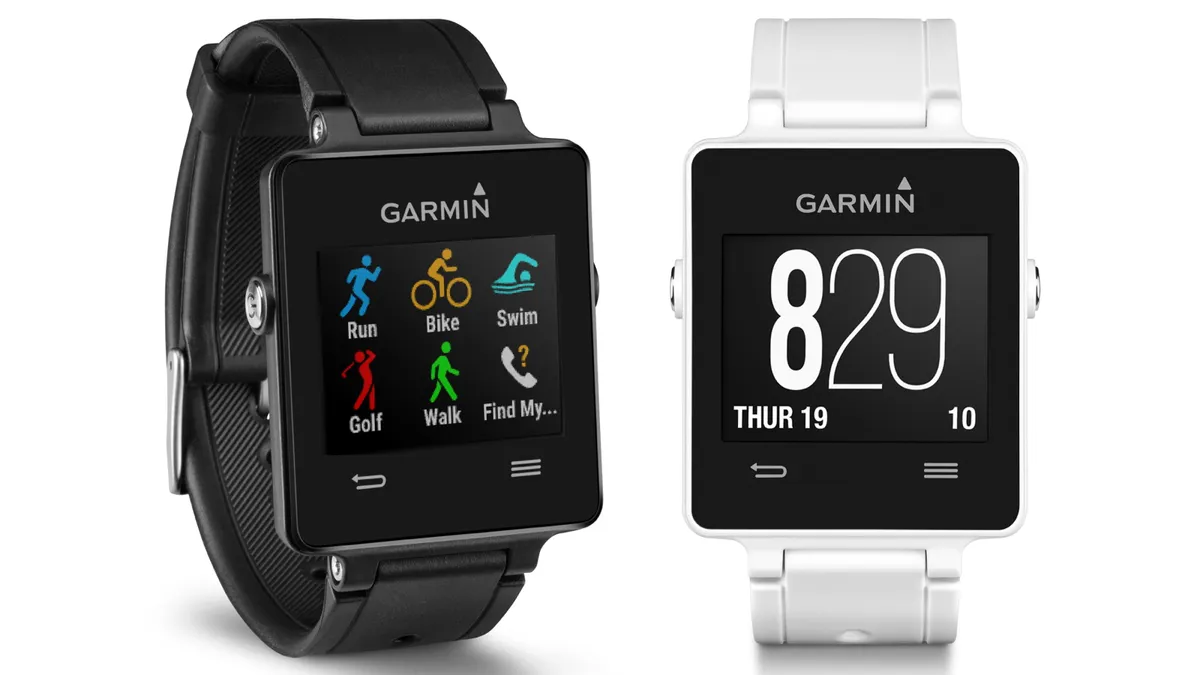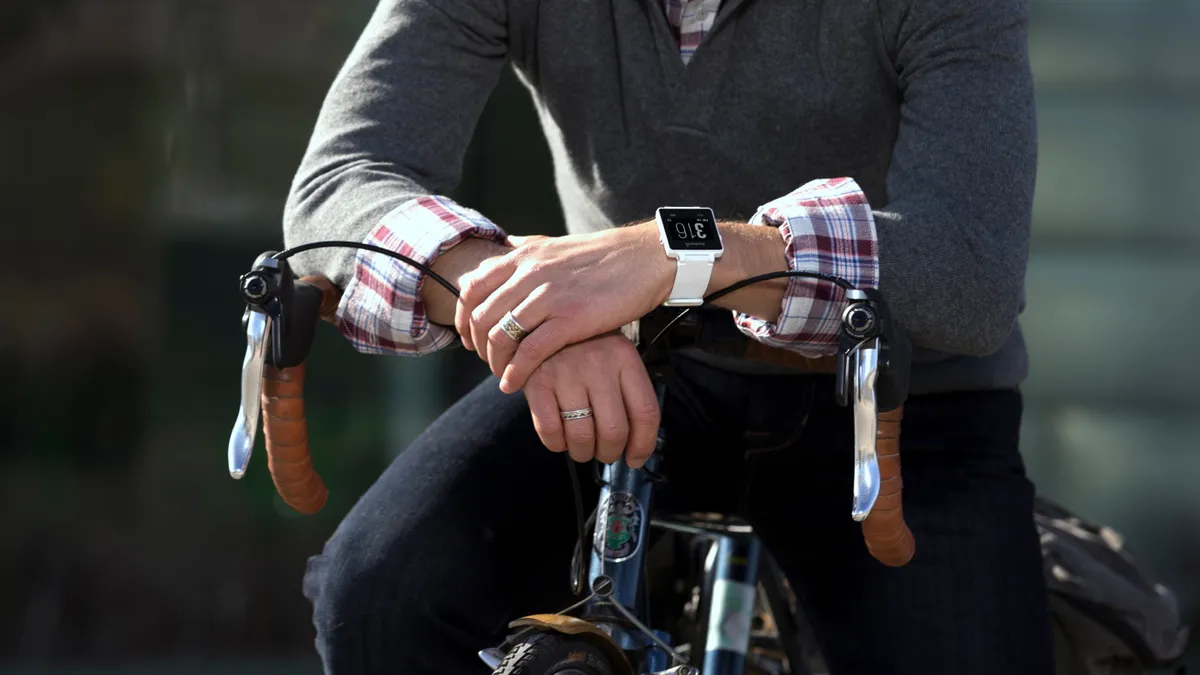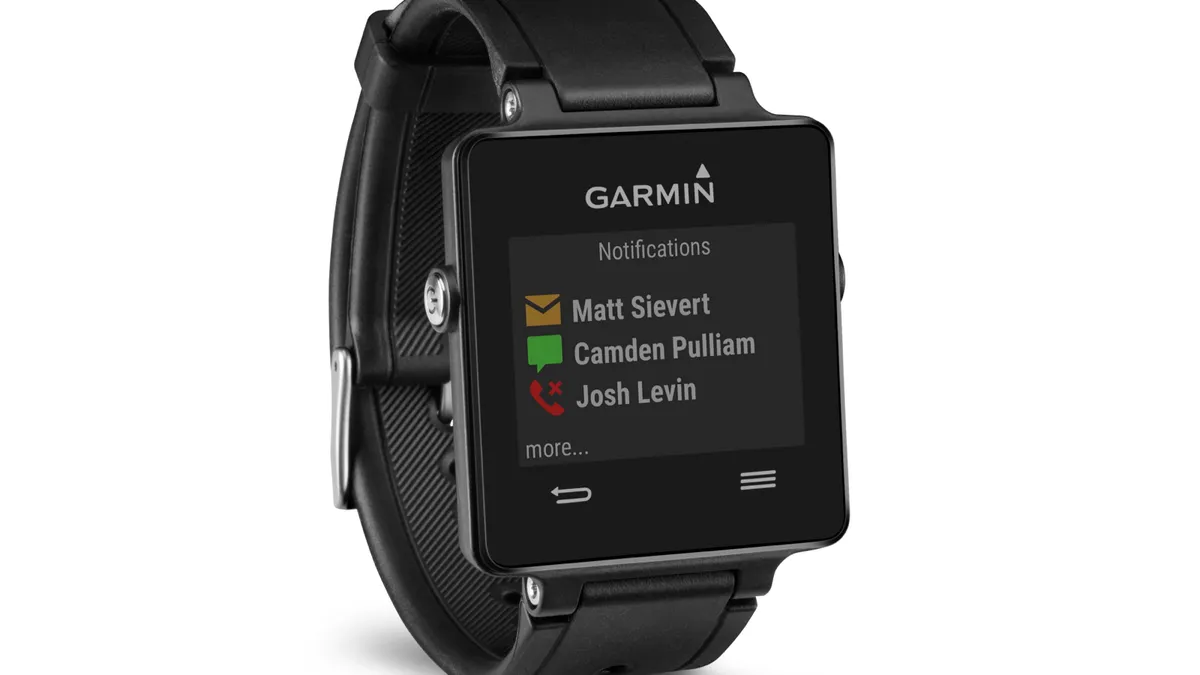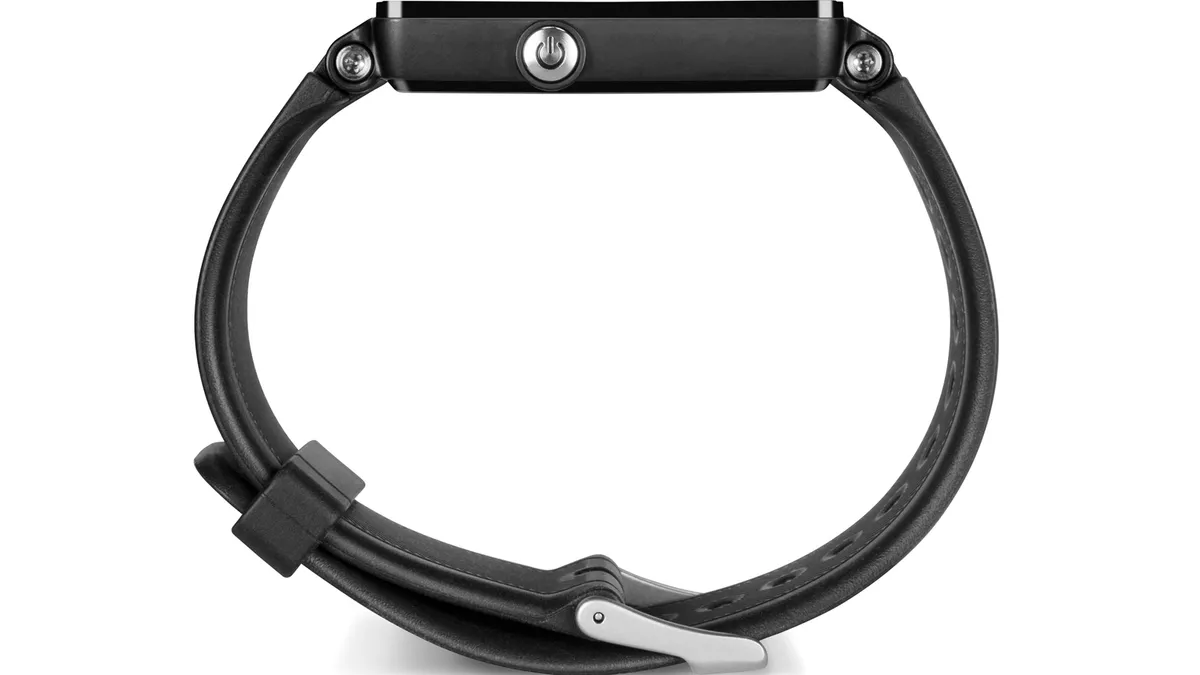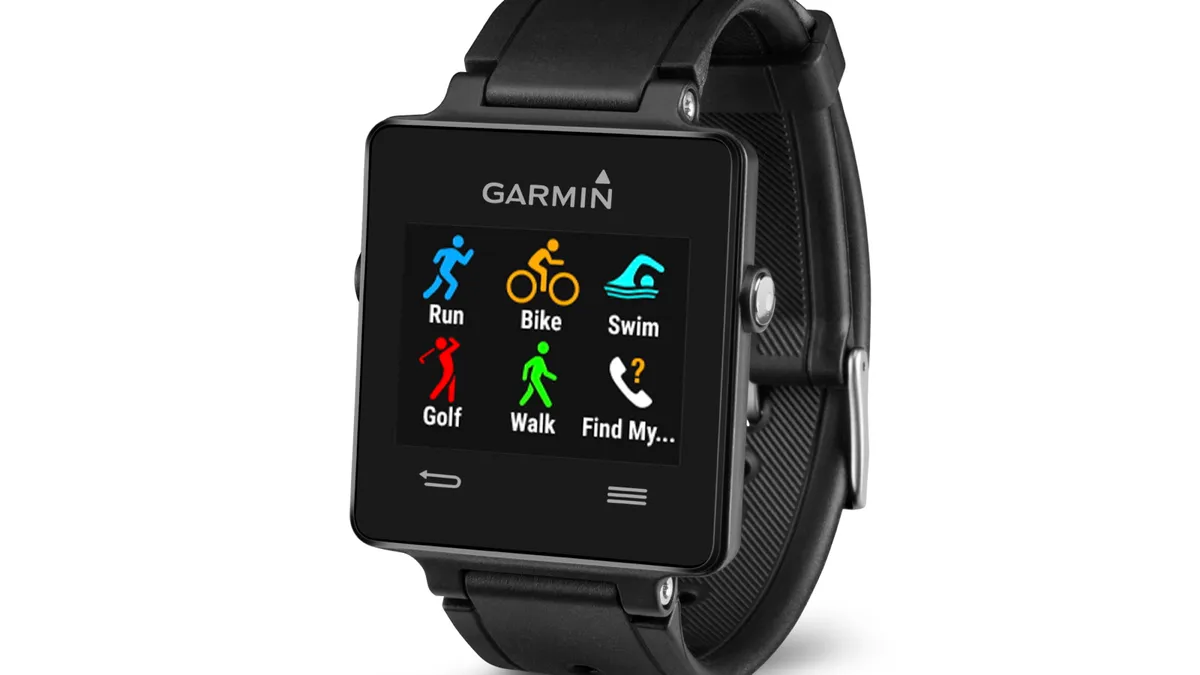At the Consumer Electronics Show this week in Las Vegas, Garmin released its first smartwatch, the Vivoactive, a thin watch with built-in apps for cycling, running, swimming and, somewhat unexpectedly, golfing. While Garmin has had a number of sports watches in its line for years, this Vivoactive is more Apple Watch than Forerunner, designed to be worn all day and paired with a smartphone.
While Apple or other smartwatch makers have a few advantages over Garmin, Garmin's history with cycling products make this watch more relevant to riders than many other mainstream offerings which don't really offer anything of value in terms of cycling-specific data.
The Garmin Vivoactive can be paired with a heart-rate strap (not included), a speed sensor or even with a Garmin VIRB Elite videocamera. The cycling app, using the built-in GPS, measures distance and speed, as well as time and an approximation of calories burned.
A built-in accelerometer acts as a back-up for GPS when using the running app to track distance and speed, and to measure strokes in the pool.
For golfers, an app measures a few things, including "layup and dogleg distances", (whatever they are!) according to a Garmin release.
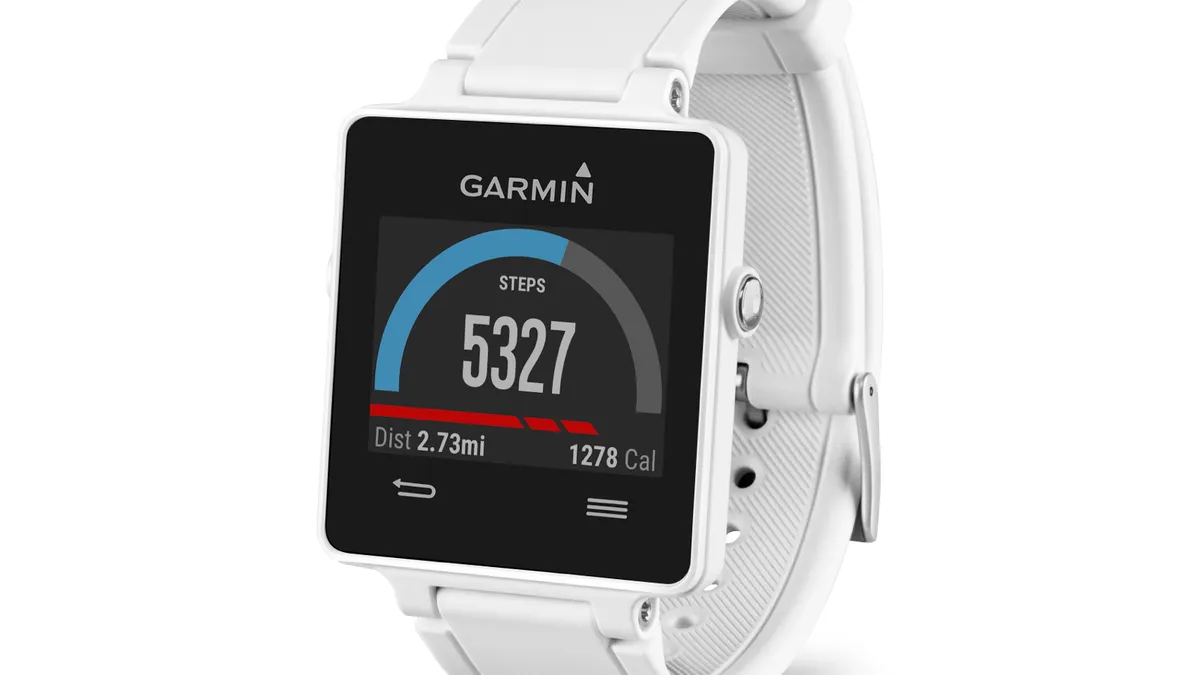
As with many activity trackers, the Garmin Vivoactive tracks steps throughout the day, charting them against your preset goal. But the more interesting features in our opinion are the cycling-specific metrics and the ability to automatically upload completed activities
As with many other smartwatches that the Vivoactive is competing with, Garmin's smartwatch monitors basic daily activities, tracking daily steps and offering reminders when the wearer has been sedentary for a certain period of time.
With a Bluetooth connection to a smartphone, the Garmin Vivoactive acts as a remote screen for incoming text, email and/or phone calls, plus notifications from social media or other apps. These are standard smartwatch features for many of Vivoactive's competitors. Of greater value, perhaps, is the watch's ability to automatically upload completed workouts (when paired to a phone), which can be viewed on Garmin Connect or a paired site like Strava or TrainingPeaks.
The Garmin Vivoactive will be available soon for US$250 alone or US$300 including a heart-rate strap. UK and AU pricing was not immediately available.
In related news, Garmin announced the latest version of the Fenix multisport watch, the Fenix 3. Using GPS and GLONASS for quick and dependable satellite connection, the Fenix 3 supports cross-country and alpine skiing, snowboarding, hiking, climbing and trail running. Garmin also released the Vivofit 2, a wristband daily activity tracker, along with a line of interchangeable bands.
